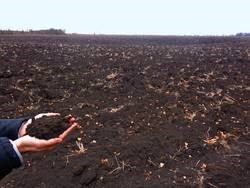Last week, the column's focus was all about soil – and what soil is. This week I would like to continue the discussion as soils are essential in determining the best use of the land. The pH of the soil is important. Nutrient levels of the soil are important. The components of the soil are of major importance. It is essential to determine the porosity, water-holding capacity and general physical quality of the soil to truly understand how to work in the best possible way with your soil. We can lump these characteristics under the general term of soil texture and soil structure.
Soil texture is the relative proportion of sand, silt and clay that makeup soil. Most of our soils will contain more than one type of mineral particle. This evolution happened over a very long time and was influenced by many different conditions. The relative proportion of each of these particle types determines the soil texture. When looking at soils from a horticultural perspective determining the soil texture is a very important tool in determining the capacity of that soil to provide the necessary elements for plants to grow.
Healthy soils should be made up of at least half its composition –°¿∂ ”∆µ pore spaces. Determining the amount of pore space in a soil will also help to determine its suitability for supporting growth. Remember that soil needs to contain minerals, air and water to be suitable for horticultural purposes. The soil structure is all of these components all together as well as a healthy amount of organic matter.
Organic matter is a wonderful amendment that can greatly improve the existing mineral faction of soils. Organic matter is defined as some type of live matter which is now dead and decaying. It can be plant or animal-based and is considered an addition or amendment to soils which can actually improve the soil greatly and is commonly used to amend poor soils adding structure and nutrition as well as increasing the water-holding capacity of that soil. Organic matter can be compost, well-rotten manure, peat, crushed bark or any other organic matter that can easily and economically be used to amend the soil.
When amending a soil, incorporate fully your organic matter that hopefully does not contain any weed seeds or other less-than-desirable things that commonly make up the soil in our gardens. The topsoil or the first soil horizon is where most of the plant action will take place. However, trees, shrubs and other deep-rooted vegetative plants will also access the next soil layer which is the subsoil. Ideally, you should amend both the topsoil and the subsoil to ensure you are providing good structure, nutrients, water and air to all roots that are growing in your garden. This amendment of the soil is the single, most important aspect of building healthy soil. Adding lots of organic matter will also aid the multitude of other flora and fauna that also contribute to a healthy soil that will provide a great growing environment for all of the plants that grow there.
My current garden which originally was of poor quality and made up mostly of clay was not a good healthy soil for plants – or for the gardener. I spent much time incorporating a lot of organic matter to ensure the soil was of the utmost health. Now, twenty years later – it is still of superior quality and the resulting maintenance that I need to do continues to be minimal.
Hanbidge is the Lead Horticulturist with Orchid Horticulture. Find us at ; by email at [email protected]; on Facebook @orchidhort and Instagram at #orchidhort.
Tune into GROW Live on our Facebook page or check out the Youtube channel GROW




